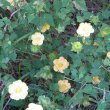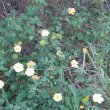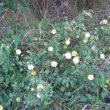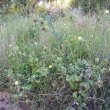| Botanical Name |
|
| Family |
Malvaceae - The hibiscus and cotton family. |
| Pronunciation |
ah-BEW-tih-lon son-ne-RAH-tee-AY-num |
| Common Name(s) |
|
| Plant Group |
- Shrub A woody plant of relatively low height, having several stems arising from the base and lacking a single trunk; a bush.
- Veld Flower Small veld flowers of interest, rather than for their usefulness in the garden. Some of these plants have garden potential, particularly for less formal garden situations.
|
| Plant Size |
- Small
| Tree | 4m to 8m |
| Shrub | 50cm to 75cm |
| Perennial/ground cover | 10cm to 20cm |
| Bulb | 20cm to 30cm |
| Succulent | 10cm to 20cm |
|
| Position |
- Canopy Shade Canopy shade is found below closely grown trees where some light filters through. Ideal for the protection of herbaceous plants.
- Light or Dappled Shade Found below trees with sparse, open foliage. Ideal for the protection of herbaceous plants.
- Partial Shade The area is in shade for part of the day and in full sun for part of the day.
- Sun The area is in full sun for all or most of the day, all year round.
|
| General Information |
- Attractive fruits, berries or seeds Brightly coloured fruits or berries increase and extend the visual impact of the plant and are especially attractive to birds and other small wildlife.
- Drought Tolerance: High The plant is well adapted to arid conditions; it can survive long periods of drought and high temperatures without extra water.
- Evergreen Plants that have leaves all year round.
- Evergreen to semi-deciduous The plant is evergreen in warmer, wetter parts of the country, but may lose some of its leaves during winter in colder, drier situations.
- Frost: Half-hardy The plant is able to survive low temperatures and some frost but requires protection against severe frost.
- Roots Non-invasive Safe to plant near pools, paving, walls or buildings.
- Water Wise Plant species originating from low rainfall regions that require less water to survive and thrive than other plant species.
|
| Specific Information |
Abutilon sonneratianum is a perennial sub-shrub with lobed, heart-shaped, velvety leaves that create a lush, tropical effect. The seed pods are unusual and ornamental. The flowers are butter yellow and open in the afternoon. If planted in full sun Abutilon sonneratianum needs at least some shade at root level from surrounding plants to show at its best.
|
| Ad Break |
|
| Flowers |
| Description |
five, broad, off-centered, silky petals in a saucer shape
|
| Season |
- All Year Plants will seldom bloom for the entire season as given in the list, but should flower during a period within these parameters.
|
| Colour |
|
| Growth Rate |
- Moderate to Fast Specifying growth rate can be very misleading as there is considerable variation of growth rate depending on type and species of plant, available water, supplementary feeding, mulching and general care, as well as the plants suitability and adaptability to the garden environment.
|
| Plant Uses |
- Attracts bees, butterflies or other insects This plant attracts insects which can be food for birds or other creatures in your garden.
- Border A strip of ground, at the edge of a driveway or path in which ornamental plants or shrubs are planted.
- Boundary A plant useful for planting around the edges of the property to form a green or colourful backdrop, an impenetrable hedge, to hide walls or create privacy.
- Filler Either a fast growing tree or shrub used temporarily to fill in an area while the permanent plants grow to a desired size, or a plant used to fill gaps in borders or beds.
- Pioneer for new gardens A very fast growing plant, able to withstand hardship, that can be used to populate land that has recently been cleared of natural vegetation. These plants pave the way for slower-growing species by adding nutrients to the soil and creating leaf litter.
- Suitable for coastal gardens Plants adapted to dry, sandy soil, forceful wind, limited rainfall and intense sunlight.
- Wild Garden An indigenous garden planted for the benefit of wildlife and birds. Provides food, water, a variety of mini-biomes and no poisonous chemicals are used.
|
| Distribution and Habitat |
in all provinces of South Africa except Northern Cape, as well as Lesotho, Swaziland, Mozambique and Zimbabwe, along forest margins, mountain slopes and disturbed bush areas, in rocky or loamy soils, usually in light shade or among scrub or low herbaceous plants
|
| Planting Suggestions |
Abutilon sonneratianum will grow in almost any well drained soil, but will thrive in a rich or well composted soil. Mulch well and water weekly when possible. Prune lightly.
|
| Lorraine's Garden Notes |
2011: I had a severe problem with white fly which defaced the leaves. The plants growing wild did not appear to be affected.
2012: I have found this species more useful for a cottage garden or veld garden than as a formal garden subject. It has not taken well to pruning to shape and grows better in the veld than in my garden. However, I see it is being sold by one of the big wholesale nurseries and they may have improved it through selective breeding.
|
| Medicinal Uses |
Abutilon sonneratianum has reportedly been used to strengthen bulls in spring.
|
| Ad Break |
|










Discuss this plant
Share knowledge, ask a question or give an experience.